Stephen Webb's Blog
July 19, 2018
The oldest problem in astronomy – solved?
It’s probably the oldest problem in astronomy: what’s the origin of high-energy cosmic rays? Finally, the question might have been solved.
Victor Hess discovered cosmic rays back in 1912, but it proved incredibly difficult to identify the astrophysical source of these bullets. The obstacle to progress was the fact that charged cosmic rays – whether protons or atomic nuclei – don’t follow a straight-line path from source to Earth. Instead, the paths get bent and twisted by magnetic fields in space. Just because a cosmic ray appears to come from a particular direction of sky doesn’t mean it really did come from that direction. It seems to be an insurmountable problem.
But we are now in the era of multi-messenger astronomy! And that allows astronomers to answer questions that once seemed impossible.
The key to unlocking the cosmic ray mystery is that the violent events that generate high-energy charged particles will also generate neutrinos. And neutrinos do follow a straight-line path from source to Earth: because they interact solely via the weak force their paths aren’t bent by magnetic fields, and they don’t get absorbed or scattered by intervening matter. Neutrinos can act as tracers of high-energy cosmic rays. Of course, the same properties that make them useful tracers also make them incredibly difficult to detect: indeed until recently, apart from a diffuse neutrino background, astronomers had managed to confirm only two astrophysical sources of neutrinos: the Sun and SN1987A (the latter being a relatively close supernova). The IceCube observatory, however, now has good evidence for a third source: TXS 0506+056. And this might have solved the mystery of high-energy cosmic rays.
In September 2017, IceCube – a neutrino telescope consisting of detectors buried in a cubic kilometer of South Pole ice – spotted a neutrino with an energy of 290TeV. (That’s 40 times more energetic than the particles accelerated by the LHC.) Astronomers could trace it back to a source in the direction of Orion. IceCube sent out an alert to observatories around the world, and several of them – Fermi, MAGIC, HAWC and others – detected an increase in gamma-ray activity from the same patch of sky. The culprit was TXS 0506+056 – a blazar that’s about four billion light years away.

A blazar is an active galactic nucleus in which one of the jets points directly at Earth. Charged particles are deflected by magnetic fields, but neutrinos and EM radiation can head straight towards Earth. Needless to say, this artist’s depiction is not to scale! (Credit: IceCube/NASA)
A blazar is an active galactic nucleus – the compact central region of a galaxy where a supermassive black hole sucks material onto an accretion disk and spews out radiation in two opposing relativistic jets. When we see a blazar, we just happen to be looking directly down one of the jets. It’s quite a thought: four billion years ago the central black hole of a galaxy hurled neutrinos and charged particles and gamma radiation towards Earth. Magnetic fields steered the charged particles away from us. But the neutrinos and gamma rays made it to Earth. And, in September 2017, IceCube detected one of those neutrinos.
The “Case of the High-Energy Cosmic Rays” isn’t entirely closed. Astronomers would want to see more examples before they can be sure that active galactic nuclei are the source. But the observation is very, very suggestive.
And, as with all else in science, the answer to one question raises others: Can other objects besides active galactic nuclei produce high-energy cosmic rays? What is the exact mechanism whereby these particles are produced? And what is the source of the most powerful cosmic rays – are blazars responsible for them too? Now that we are in the age of multi-messenger astronomy, an age in which we can observe astrophysical events not only across the entire electromagnetic spectrum but also with gravitational wave telescopes and neutrino telescopes … well, the answers might start to come more quickly.
June 15, 2018
The Cosmic Zoo, by Dirk Schulze-Makuch and William Bains: a book review
The universe appears to be silent. Even though astronomers have been making incredible advances — building vast new observatories, developing better techniques and analytical approaches, opening up entirely new windows on the universe — none of this has turned up any evidence of extraterrestrial intelligence. This silence is becoming deafening. Indeed, the most important question in science — to my mind, at least — is: are there any intelligent, technologically advanced civilisations out there in the universe? Or is it just us?
One can take many approaches to this question, of course, but it can be useful to think in terms of “barriers”. What barriers must be overcome in order to get from a soup of abiotic, organic chemicals to a technologically advanced species capable of disturbing the universe in a way that distant astronomers can detect? This is an interesting approach because, depending on where you place the barriers, you end up with quite different universes.
For example, you might argue that abiogenesis represents a major barrier. In other words, that the transition from non-life to life takes an unlikely sequence of events — so unlikely that life itself is vanishingly rare. This is certainly plausible. If this argument is correct then we are living in an empty universe (“empty” in the biological sense).
Or you might argue that abiogenesis isn’t an insuperable hurdle, but that the transition from a simple prokaryotic type of cell to the more complex eukaryotic type of cell represents a significant barrier. If that argument is correct then, when we go out and explore new solar systems (or when we use the new generation of incredibly powerful telescopes to study exoplanets), we’ll encounter worlds rich in microbial life but lacking in complex life.
Or you could argue that a barrier lies ahead of us, that technological civilisation itself is a self-limiting phenomenon (and it’s depressingly easy to imagine why that might be the case: nuclear holocaust, biowarfare, climate change as a byproduct of technological life…) This dispiriting thought gives rise to a quite different universe, one in which there might have been many civilisations at a similar stage of technological development to our own — but which died out before they reached the stars.
So, as you can see, it’s interesting to think about the location of barriers on the path from non-life to technological civilisation. The Cosmic Zoo: Complex Life on Many Worlds (Springer, 2017), an ambitious book by Dirk Schulze-Makuch and William Bains, is one of the best studies in recent years on this topic.
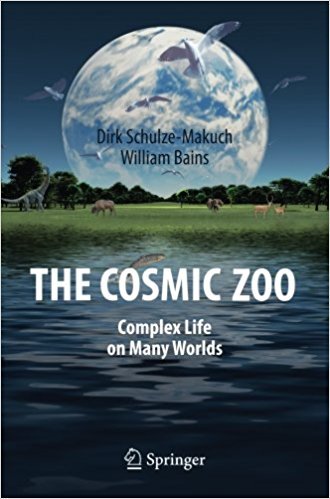
Cover of “The Cosmic Zoo”
Schulze-Makuch and Bains look at what life does — how it functions — and make a strong case for saying that if life starts on a world then complex lifeforms will at some stage inevitably arise on that world. Many possible barriers that scientists have suggested — the development of photosynthesis, for example, or the rise of multicellularity — are minor speed bumps in the road rather than tall brick walls: the particular biochemical pathway that life took on Earth might be rare, but many different biochemical pathways are available that lead to the same functional outcome. In other words, if abiogenesis is not particularly rare event then when we start to explore the universe we’ll find worlds teeming with complex life forms. The universe will be a cosmic zoo! It’s an enthralling possibility (albeit one that highlights the possibility of a barrier lying somewhere in front of us: a universe that’s silent because it’s rare that technological civilisation survives long).
The Cosmic Zoo is clearly written, mercifully devoid of jargon, and concisely covers a vast amount of material. Every reader, having read this book, will come away with a better understanding of the current state of astrobiological thinking – and also with a much deeper appreciation of the wonders of life here on Earth.
February 18, 2018
Zero
Zero — the humble 0 — is one of the most important mathematical symbols I discuss in Clash of Symbols. We take zero for granted, but the invention of this concept is one of the greatest breakthroughs in all of mathematics.
You’d be forgiven for thinking that nothing new could be learned about the history of zero. But in late 2017, after my book went to print, scientists carbon-dated an ancient Indian manuscript called the Bakhshali manuscript. The birch bark on which a long-forgotten author worked is now believed to date to the 3rd or 4th century. The Bakhshali author’s use of a symbol to represent zero means this is the earliest recorded example of the concept.

The use of a symbol for zero in the Bakhshali manuscript. (Credit: University of Oxford)
December 22, 2017
Review of Asimov’s Nov/Dec 2017

Cover of the Nov/Dec 2017 double issue
The Asimov’s anniversary year ended on a high: this was my favourite issue of 2017.
For a start, the cover story a novella from Connie Willis. Who doesn’t enjoy a Connie Willis story at Christmas? (“I met a traveller in an antique land” wasn’t one of her Christmas stories for Asimov’s, but it was one of those urban fantasies that she does so well. This one had lots of atmosphere, lots of poignant references to lost literary works – the sort of story that would have had a natural home in Unknown magazine.)
In addition to the Willis novella this issue contained a number of thoughtful, well-written stories. “The nanny bubble” by Norman Spinrad was a story all parents should read in our over-protective world. “Confessions of a con girl” by Nick Wolven was the moving tale of how a young girl accumulated enough “unlike” votes to be removed from college. “The discrete charm of the Turing machine” by Greg Egan was a touching description of the relationship between a man and his wife in a world in which automation is taking jobs. “Operators” by Joel Richards was a classic, near-future SF story – the tale of a man who has to investigate the hijacking of self-driving trucks.
I’ve picked out five stories here, but there wasn’t a weak story in the entire issue.
I hope I’m around to read the next 40 years of Asimov’s (gulp).
October 18, 2017
A new dawn for astronomy
We should be grateful that we’re alive to see the birth of a new type of astronomy.
On 16 October 2017, astronomers from the LIGO-VIRGO collaboration announced that they had detected — for the first time — gravitational waves from the collision of two neutron stars. The detection was made two months earlier, on 17 August so the event was given the name GW170817. But the announcement was of something much, much more exciting than another observation of gravitational waves (tremendously exciting though that is in itself — it is, after all, only the fifth observation of gravitational waves!)
Information from all three LIGO/VIRGO detectors enabled astronomers to localise GW170817 to a patch of sky in the constellation Hydra. However, about 1.74 seconds after detectors were shaken by gravitational waves, the Fermi Space Telescope registered the detection of gamma rays from a gamma-ray burst — the event GRB 170817A, which was in the same patch of sky as the merger. The chances of observing GW170817 and GRB 170817A at the same time and in the same place were tiny — unless, of course, they were the same event!
Astronomers around the world were notified, and about 70 telescopes were trained on Hydra. And so, in the weeks following the merger, astronomers were able to observe the after effects at all the different electromagnetic wavelengths, from gamma rays and X-rays all the way down through visible and radio. This is the most studied event in the history of astrophysics!
It’s difficult to keep up with what this event tells us. To pick three items at random, from the combined observations we now know that:
colliding neutron stars power short gamma-ray bursts
elements heavier than iron, such as gold and platinum, form in these collisions
gravitational waves travel at the speed of light
But it’s the promise of seeing more of these events that is so exciting, because they will enable us to learn so much more about the universe. A merger of two neutron stars is a “standard siren“, which gives us a new method of directly measuring cosmic distances — and thus of measuring the Hubble constant; we can use neutron star mergers to investigate relativity; we can learn much more about the behaviour of matter in these intense conditions; the possibilities are huge. We have now entered the era of multi-messenger astronomy — and it’s going to be wonderful!
September 29, 2017
A fourth detection of gravitational waves
On 27 September 2017, astronomers announced the fourth detection of gravitational waves. This was the first time the Italian-based VIRGO observatory has detected gravitational waves; the same waves, of course, were picked up by the two LIGO observatories.
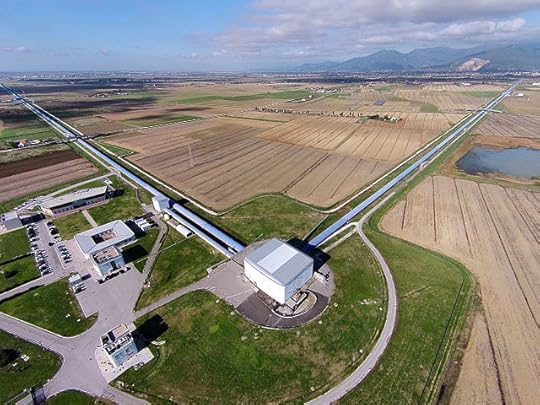
The VIRGO observatory in Italy consists of two 3km-long arms, which together form an interferometer. (Credit: VIRGO Collaboration)
We are now entering the era of gravitational wave astronomy. When the number of observatories detecting a gravitational wave signal increases from two to three, scientists can glean much more information about the source. For example, they can gain information about the polarization of the wave. (It looks as if the general relativistic prediction about the number of polarizations is correct; Einstein wins again.) And, as the image below demonstrates, they can localise the source much more accurately. (Astronomers pointed 25 optical telescopes in the direction suggested by the LIGO/VIRGO discovery, but saw nothing – as was to be expected if the source of the gravitational waves was the collision of a pair of inspiralling black holes.)
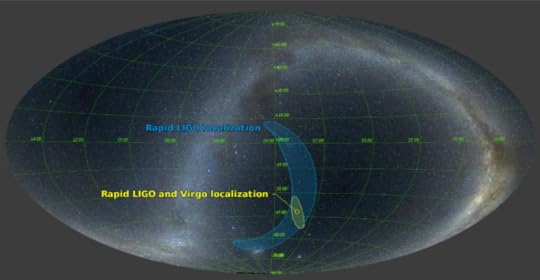
When VIRGO works in tandem with the two LIGO observatories, astronomers can localise a source with much more accuracy. (Credit: VIRGO Collaboration)
So what was the source of this gravitational wave event? It seems to have been the merger of a pair of black holes, with mass 31 and 25 times that of the Sun, about 1.8 billion light years away in the constellation of Eridanus. The merger created a single black hole with a mass 53 times that of the Sun; thus three solar masses was radiated away in gravitational waves. That’s a huge amount of energy. LIGO and VIRGO caught a tiny fraction of it.
We now have data from four events. That’s too few to start drawing conclusions, but these four events are interesting. They all come from the merger of two quite large-mass black holes, as the table below shows:
Event
Mass of BH1 (solar masses)
Mass of BH2 (solar masses)
GW 150914
36
29
GW 151226
14
8
GW 170104
31
20
GW 170814
31.5
25
As I made clear in my book New Eyes on the Universe, I was sure that gravitational waves from merging black holes would soon be found. LIGO found them slightly more quickly than I anticipated, but I wasn’t surprised by the announcement. But I am surprised at the masses of the black holes that are involved: these seem to me to be on the high side. As more events are discovered in the coming years, it will be interesting to see whether these four events are typical.
September 22, 2017
The origin of ultra-high-energy cosmic rays
Every so often Earth’s atmosphere gets hit by a charged particle (typically an atomic nucleus) with an energy greater than 1 EeV (1018 eV) — in other words, an ultra-high-energy cosmic ray. One of the longest-standing problems in astronomy is the origin of these ultra-high-energy cosmic rays.
°The reason it’s difficult to pinpoint where these particles come from is that the Milky Way’s tangle of magnetic fields sends electrically charged particles in wild spirals. Any directional information about the origin of these charged particles get destroyed. Cosmic rays thus hit Earth equally from all directions, and that begs the question: do these high-energy particles originate within our galaxy or do they have an extragalactic origin? In a recent paper, astrophysicists at the Pierre Auger Laboratory claim to have solved the mystery: ultra-high-energy cosmic rays have an extragalactic origin.

One of the many water-Cherenkov surface detectors that make up the Auger cosmic ray telescope.
The Auger Collaboration looked at 30000 of the very highest-energy particles. Because of their high energies, these particles undergo less deflection than the billions of low-energy cosmic rays that constantly bombard Earth. The Collaboration tracked these particles back, and found that there was an excess of particles coming from a patch of sky 120° away from the centre of the Milky Way. Furthermore, this patch of sky contains a high density of nearby galaxies.
The case seems to be settled: ultra-high-energy cosmic rays have an extragalactic origin. They come from nearby galaxies. Furthermore, since they don’t come from the Milky Way we can probably assume that the galaxies they do come from are somehow different to the Milky Way. Perhaps they originate in a galaxy such as Centaurus A, which contains relativistic jets powered by a supermassive central black hole. Further study will surely pinpoint the precise origin of these enigmatic particles.
September 20, 2017
My education
I was born and bred in Middlesbrough (an industrial town in the North East of England; the header image above shows the town laid out in all its glory). My infant school, primary school, and secondary school no longer exist — they’ve long since been demolished. Acklam Hall, which housed my 6th Form College, at least still exists; it’s the only Grade I listed building in Middlesbrough. Nowadays, though, it offers instead a wedding venue and serviced office accommodation.
After ‘A’ levels I took a BSc Physics (1st class honors) at the University of Bristol. The city itself is a wonderful place, and some of my happiest memories are of my time at Bristol — the people, the town, and the university.
The physics department at Bristol has been associated with some illustrious names. Paul Dirac, who studied mathematics at Bristol, sat in on lectures about quantum theory by Arthur Tyndall. The Nobel Prize winners Nevill Mott and Cecil Frank were professors at Bristol. During my time as a student there it was a privilege to be taught by, among others, John Nye and Michael Berry.
After Bristol I took a PhD in theoretical particle physics at the University of Manchester. The city has been transformed since I was a student there. It’s much improved.
The physics department at Manchester is one of the largest in the UK, and a number of Nobel Prize winners have held positions there: JJ Thomson, Ernest Rutherford, Lawrence Bragg, Niels Bohr, James Chadwick, Patrick Blackett, John Cockcroft, Hans Bethe, Nevill Mott (he moved to Bristol after Manchester), Andre Geim and Konstantin Novoselov.
To finish with the post-nominals, I’ve been elected M.Inst.P., C.Phys. and SFHEA. (Which reminds me of a scene from my all-time favourite TV show Cheers. Frasier Crane: “Everybody, I’d like you to meet my date, Dr Lilith Sternin, MD, PhD, EdD, APA.” Woody Boyd: “Boy, it sure isn’t spelled like it sounds.”)
My interests
Football
I’m just old enough to have seen the 1970 World Cup on TV. I watched the outrageous skills of Pele — the shot from the inside his own half against Czechoslovakia, the dummy against the Uruguay keeper, the header that forced that save from Gordon Banks — along with the incredible attacking flair of Jairzinho et al and, because I was young, I thought that this must be the general standard of football. I still love football, but it’s been downhill since 1970…
I’ve supported the Boro — Middlesbrough Football Club — for as long as I can remember. My first game: my dad took me to see Boro vs Benfica (a pre-season friendly on 10 August 1971; it was a 1-1 draw and, yes, Eusebio was playing).

My first visit to Ayresome Park saw me in the East Stand. When I was old enough, I graduated to standing in the Holgate.
For many years I was a season-ticket holder, both at Ayresome Park and then the Riverside. Now I live 312 miles away, so I only get to a few games each season.

My season ticket seat was in the top-right corner of this photo. I had to give it up when I moved to the south coast. Sigh…
The best player I’ve seen in a Boro shirt is, undoubtedly, Juninho. (I did once meet Wilf Mannion. But it was in a garden centre, and he was about 70. For people of my dad’s generation the “Golden Boy” was one of the all-time greats.) Although we’ve had many terrific players — Bryan Robson, Fabrizio Ravanelli, George Hardwick, Brian Clough, Bobby Murdoch, Graham Souness — we’ve seldom had a terrific team. Maybe next year…
Other sports
As a teenager I played cricket as well as football. (I was a better cricketer than footballer, but my main claim to cricketing fame is dropping a catch off Geoffrey Boycott in some informal close-of-play practice during a Yorkshire game at Acklam Park.) I rarely watch cricket now, but I still enjoy reading a good cricket book; compared to football, cricket has inspired far better literature.
As a kid I read everything I could about Sir Don Bradman. I didn’t see him play of course (he retired from the game 15 years before I was born) but my neighbour, a retired schoolmaster, shared his memories of playing against him in 1930. The Don’s achievements are staggering: they clearly will never be matched. Not only the best batsman of all time — the best sportsman.
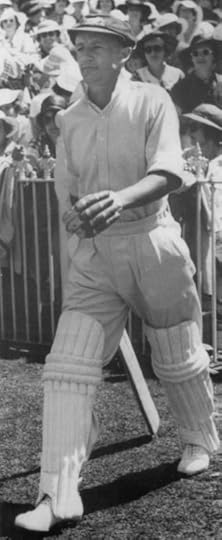
Bradman in 1937, walking out to bat in the Third Test against England at the MCG. He scored 270. Wisden rated this the best innings of all time.
I know I shouldn’t like boxing — and most of the time I don’t — but I grew up watching Muhammad Ali. What a man.
And I’m grateful that I was around to see Usain Bolt run. I watched him run 9.58s for the 100m with a feeling of unreality — how can anybody be that quick?
Books
My collection of Asimov books is almost complete. Considering that he had over 500 books published, that should perhaps give you some idea of my reading interests. Or perhaps not — Isaac wrote not only science fiction, but also mysteries and limericks; and books on science, literature, history, the Bible, Gilbert and Sullivan … pretty much everything, really!
There’s a separate section of this blog devoted to SF, so here are some non-SF books (in no particular order) that are important to me.
Pale Fire — Nabokov. This is such a clever book from a clever writer.
The Code of the Woosters — Wodehouse. All Wodehouse is wonderful, but this one with the “cow-creamer” is probably my favourite.
Zen and the Art of Motorcycle Maintenance — Pirsig. Decades after first reading this, I still don’t quite know what to make of it. But I’ve never been able to forget it.
The Feynman Lectures on Physics — Feynman. Ah, the red books…
Fatherland — Harris. Probably the best thriller I’ve read (although Gorky Park by Cruz Smith runs it close).
Films & TV
Nowadays I hardly watch television, and it’s been years since I last went to the cinema. Production values nowadays are undeniably better now than they were in the past, but it’s often to the detriment of story and characterisation. They tell me that we’re living through a golden age for filmed media, but consider the following list of my favorite films and TV and tell me: who’s making stuff as good as this today?
Forbidden Planet
I fell in love with this film the moment I heard the “electronic tonalities” by Bebe and Louis Barron. I like most SF films from 1950s, but Forbidden Planet is in an entirely different league to those others.
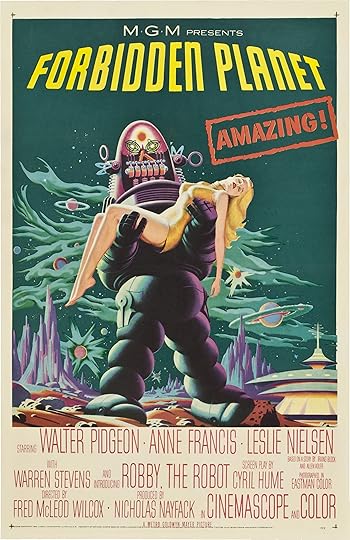
Cinema poster for Forbidden Planet
Chinatown
Although I love Forbidden Planet, I’m not blind to its weaknesses. But Chinatown is a perfect piece of cinema. Acting, script, direction, music, cinematography, costume … it’s flawless. If you’ve never seen it, treat yourself.

Cinema poster for Chinatown
Cheers
My favourite TV show of all time: funny, smart, terrific scripts, great actors…
Britain has produced some great TV comedies — Fawlty Towers, for example. But only 12 episodes of Fawlty Towers were filmed; everyone involved knew that the quality would decline if further episodes were made. The writers of Cheers managed to maintain its quality for 275 episodes — amazing.

The intro screen for Cheers
Hill Street Blues
Easily the best cop show there’s been. The opening to each episode of Hill Street Blues was perfection — police car, sirens blaring, heads out into a cold, rainy street while a despatch operator says “We have a 9-11… Armed robbery in progress…” and the haunting theme tune begins…
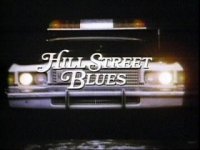
The intro screen of Hill Street Blues
Tinker Tailor Solder Spy
When I read any of Le Carré’s books featuring George Smiley, I can’t help but picture Alec Guinness.

The intro screen of Tinker Tailor Soldier Spy
September 2, 2017
Review of Asimov’s Sept/Oct 2017
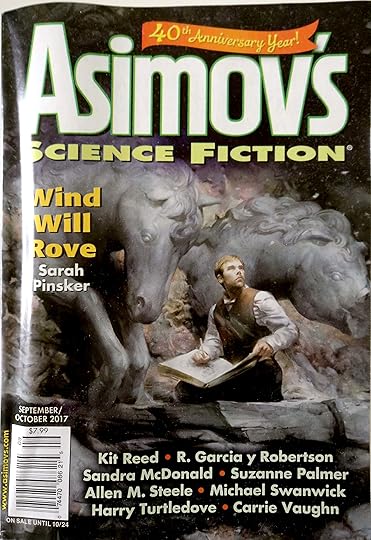
Cover of the Sept/Oct 2017 double issue
As this 40th anniversary year continues, it seems as if the bi-monthly issues are of two types. One type contains mainly longer works, and consequently fewer of them. The other type contains mainly shorter works, and consequently more of them. (The page count is constant.)
In general I prefer SF stories at the longer length, so I should prefer those issues of Asimov’s that contain fewer but longer stories. But so far this year I have a clear preference for the issues that have contained a broad spread of short stories.
Fortunately, the Sept/Oct issue contains no fewer than 10 short stories along with 4 novelettes. And it’s fun. Tim McDaniel’s “Squamous and Eldritch Get a Yard Sale Bargain” is as comic as its title suggests. “Zigeuner” is one of Harry Turtledove’s alternate history stories, and it’s a good one (although I did guess the twist before it was revealed). Allen Steele’s “An Incident in the Literary Life of Nathan Arkwright” is a solid addition to that series, and Michael Swanwick’s “Universe Box” is typically wild.
Another solid issue.
Stephen Webb's Blog
- Stephen Webb's profile
- 26 followers



